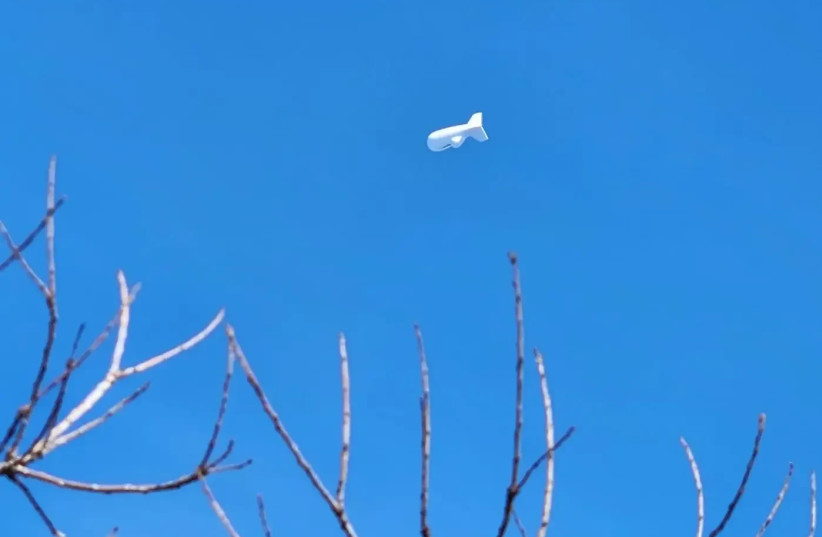Sky Dew: The high-stakes game of Israel’s advanced spy balloons
When observing your surroundings, you might climb a hill, a roof, or an observation tower. This principle applies to advanced radars as well. They can see for hundreds of kilometers if placed high enough. Importantly, high placement allows them to observe downwards.
This is the basis for Sky Dew, the Israeli Air Force’s (IAF) advanced observation balloon, which launched Sunday morning after a year and a half on the ground, preparing for operational service.
Developed by Israel Aerospace Industries (IAI), which provided the radar, and the American balloon manufacturer TCOM, it’s led by the Defense Ministry and funded by the US Department of Defense. Delivered to the Air Force in 2022, its goal is to detect unmanned aircraft and cruise missiles from Iran and Syria, targets that are small and hard to detect.
This system is not new to the Air Force. For over 30 years, simpler and smaller balloons have been used in the south, developed after the peace agreement with Egypt, to monitor for surprises from the east. These were developed by IAI and Elta Systems, specializing in radars. According to foreign sources, India has also purchased such balloons.

Observation balloons’ military use dates back to 1794 at the Battle of Fleurus in Belgium. Without radars or cameras, the French used a human observer in a balloon to gather aerial intelligence, helping them win the battle. However, Napoleon later disbanded the French military balloon corps.
Since the 1950s, the US has operated radar-carrying aircraft for aerial target detection, like the Airborne early warning and control system (AWACS.) This aircraft can detect everything flying in the area and has been key in guiding pilots to hostile targets.
Israel couldn’t purchase the expensive AWACS from the US in the late 1970s, so it bought three smaller and cheaper Hawkeye aircraft for the Air Force, which are still in use today. The Air Force now also owns the Nachshon aircraft, developed by IAI based on the American Gulfstream business jet.
The radar on these aircraft is more advanced than the AWACS, with better detection capabilities and resistance to jamming. The significant difference is the cost of flight hour, easing the defense budget. This technology has been sold to countries like Italy and South Korea, with each aircraft costing over $200 million.
However, the Nachshon’s existence doesn’t negate the need for a radar-carrying observation balloon. Although it can’t rise to extreme heights or accompany fighter jets to targets like Iran, it has one key advantage: it can remain in surveillance for weeks without the need for fuel or crew replacement.
The Defense Ministry hasn’t officially announced it, but the balloon’s radar is believed to be based on the Arrow system radar, capable of observing at 250 km and tracking multiple targets. Positioned high, it can detect low-altitude targets and those in valleys, crucial for detecting objects like cruise missiles.
The main advantage of a radar balloon over a radar aircraft is the operating costs. An hour of AWACS flight costs about $40,000, compared to a few thousand for the Nachshon, and even less for a balloon. This cost-effectiveness is significant, with one country reporting savings of $27 million a year by using radar balloons instead of aircraft.
The balloon’s downside is its size. The new balloon’s dimensions are undisclosed, but previous Elta radar balloons are 55 meters long. Their height makes them visible to enemies, and they are also expensive and sensitive to basic faults like air leaks.
It took over a year for the defense system to operationalize the balloon, a sign of the IDF’s readiness issues revealed on October 7. Even simpler observation balloons in the south were grounded due to faults during a critical Hamas attack, highlighting the system’s vulnerabilities.
Iron Dome radars and other IDF ground-based radars can detect UAVs, as seen during the Hezbollah conflict. However, there were incidents of soldiers being harmed by enemy UAVs and false alarms sending communities to shelters unnecessarily. The operational Sky Dew system could alleviate these issues, providing an additional, prestigious target for Hassan Nasrallah.





Comments are closed.